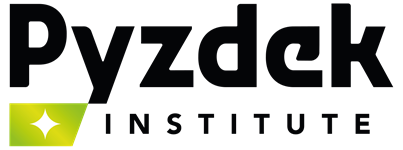To say Mary Scott was nervous was an understatement. She was downright scared. Since her new boss told her that Quality 2.0 would be different, there was one change that she most dreaded: making her department’s transition from a cost center to a profit center. “We need to sell our services, people,” Mary announced. She looked around the table at the faces of her staff. She’d recruited most of them personally and they really understood what it took to make a customer contact center hum, but none were sales experts. Until now, TechDyno had been giving customer service and support away as part of the price of TechDyno’s software, but price pressure was quickly making that approach obsolete. “I’ve asked our process excellence consultant, Troy Polaski, to join us. He’s going to coach us through a process to better understand our customers.”
Troy stood and said, “The process is quality function deployment, or QFD. It’s a rigorous…”
Peter Busbach raised his hand and declared, “I know about QFD! I used it years ago at the defense plant where I used to work.” Mary thought about Peter’s former employer. It spent millions training people in Six Sigma, and when it lost a big contract and laid people off, that proved a boon for the smaller companies in the area. TechDyno snatched up its share of people, one being Peter, a Six Sigma expert.
Troy acknowledged Peter’s point, “Right, QFD is nothing new. But it’s changed a lot in recent years. You may not be aware of how much it’s changed, Peter.”
Peter nodded thoughtfully and said, “I hope you’re right, Troy. When I was using it, it was a very complicated, time- consuming process, and the results were hard to explain to people who weren’t on the team. My company gave up after a couple of years.”
Troy nodded. “A lot of companies did, but QFD is making a comeback as a result of modernization. Let me give the group an overview of what QFD is and how it’s used.” Troy explained that QFD was a structured approach that begins with studying customers and identifying their needs and requirements. For example, customers usually don’t mention things that they assume they’ll get–like tires on a car or food that isn’t spoiled. Troy called these “basic” quality features. Not providing these features can make customers unhappy, but providing them just gets you a ticket to the game; it doesn’t help you win customer loyalty.
Another type of demand is the things that customers actually look for. Troy called these “expected” quality features. The more expected quality features you provide, the higher the customer loyalty.
“But the real bang for the buck comes when you realize that customers can be surprised when you offer them things they didn’t even know they wanted,” said Troy. “I call these ‘surprise’ quality features.”
Mary raised her hand. “How can you learn about these things if even the customer doesn’t know about them?”
“Great question.” Troy said. “The way it’s done these days is to actually spend time with customers, watching what they do and learning about their problems and needs. When you walk a mile in your customer’s shoes, you can learn about the struggles and demands that they face all of the time, but that they don’t put into words or even think about. Usually they don’t even think you could help them. When you can surprise them by doing so, you really increase their loyalty.”
Troy went on to describe QFD and the tools they could use to transform the cost center into a profit center. Mary jotted down her tentative checklist:
Quality Function Deployment Checklist
- Identify goals and obtain shared vision from management and her team. Use brainstorming to begin, then use affinity analysis to organize the ideas, then a tree diagram to organize specific goals.
- Develop metrics.
- Decide which customers to go to based on the goals.
- Identify key customer segments using the knowledge of her team and marketing expertise from TechDyno’s headquarters.
- Go to the customer.
- Map the customer’s processes. Use flowcharts, root cause analysis, fault trees, and other tools mentioned by Troy.
- Identify how TechDyno’s product is used in the context of the customer’s processes. Use the old reporter’s approach: who, what, when, where, why, and how.
- Design new offerings and prepare marketing plans for them.
“You’ve got your work cut out for you, Mary,” Troy said as he looked over Mary’s shoulder. She looked at the list. It was daunting, but she and her team were never ones to shy away from hard work. The path was clear, at least, and she was ready to get to work.

Leave a Reply